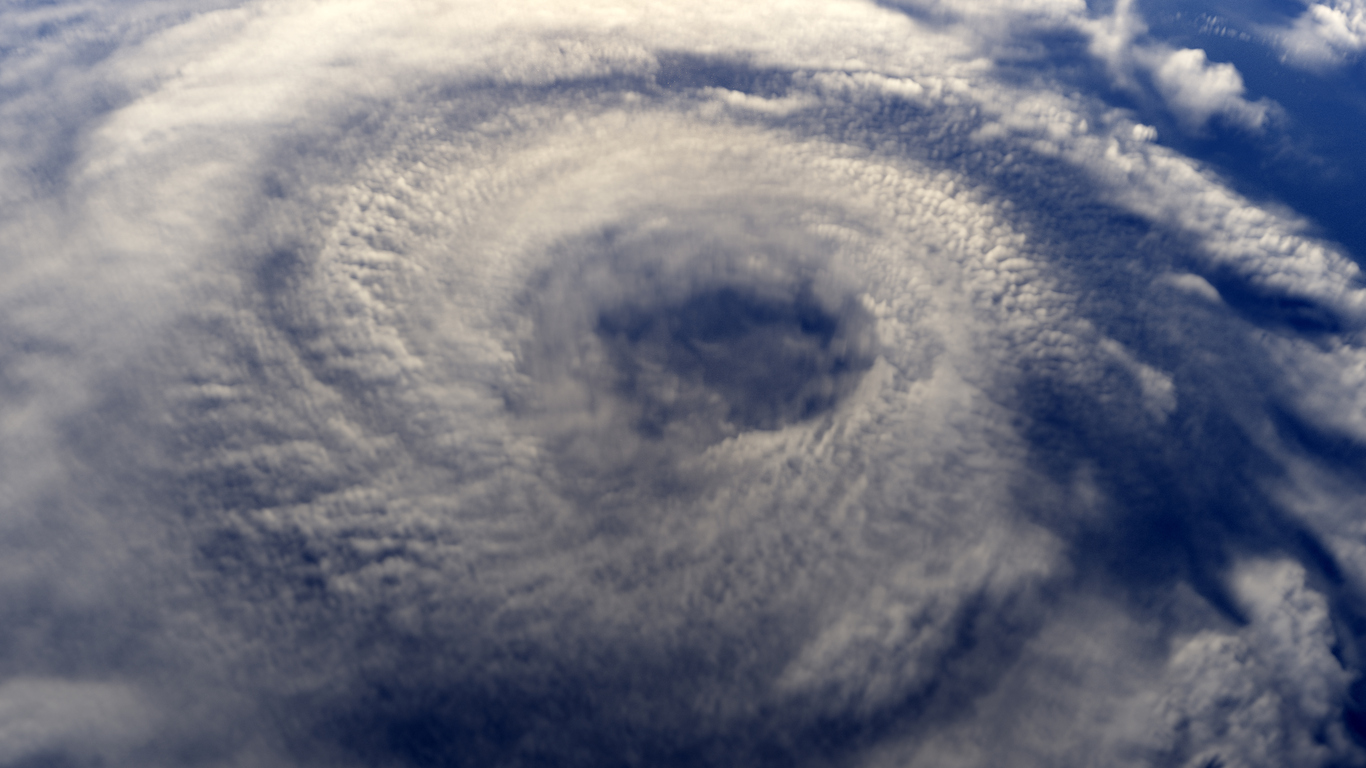Early Thursday morning, Delta, now a Category 2 storm, had maximum sustained winds of 100 miles per hour and was about 450 miles south-southeast of Cameron, La., according to a 5 a.m. Eastern time advisory from the National Hurricane Center. Hurricane conditions and a life-threatening storm surge were expected to begin affecting the northern Gulf Coast on Friday.
A storm surge watch was in effect for parts of Texas and Mississippi, while parts of Louisiana, including the area east of Sabine Pass to Morgan City, were under a hurricane warning. Tropical storm warnings and watches were in place for several more areas along the Gulf Coast region, the center said.
Delta first made landfall in southeastern Mexico near the tip of the Yucatán Peninsula early Wednesday, knocking out power, felling trees, shattering windows, and causing scattered flooding in cities and towns along the Caribbean coast. But regional and federal officials said they had received no reports of deaths.
As it crossed the peninsula and moved into the Gulf of Mexico on Wednesday, visitors and residents of the region breathed a sigh of relief as the hurricane delivered a lesser punch than many there had feared.
The hurricane, which had grown to a Category 4 before weakening, could strengthen again into a Category 3 as it moves across the Gulf of Mexico on Thursday. It could possibly diminish again to a Category 2 as it nears landfall along the Louisiana coastline on Friday afternoon or evening, said Dennis Feltgen, a meteorologist and spokesman for the U.S. National Hurricane Center.
“What folks need to realize is wind and water impacts are well away from the center,” he said. “In fact, the storm’s wind field is expanding with time. Wind and water impacts will be felt beginning tomorrow morning.”
It has been a brutal year for hurricanes on the U.S. Gulf Coast, which was heavily battered by Laura in late August and Sally in September. Those storms had caused extensive property damage and several deaths.
“We know what hurricane fatigue is all about and unfortunately, the northern Gulf Coast is experiencing that this year,” Mr. Feltgen said. Delta will be the seventh named storm and the fourth hurricane to hit the area this year.
“That’s a lot of fatigue and it’s certainly understandable,” he said. “But that doesn’t mean you don’t prepare for the next one.”
While Louisiana largely avoided wide-scale destruction from Cristobal, Marco, Sally and Beta, each storm brought to the area a fresh round of evacuations and fear.
Delta was expected to produce up to 15 inches of rain across the southwest into south central Louisiana from Friday through Saturday. Tornadoes were possible from late Thursday into Friday over southern parts of Louisiana and Mississippi.
Gov. John Bel Edwards of Louisiana and Gov. Kay Ivey of Alabama both declared states of emergency on Tuesday. The next day, Gov. Tate Reeves of Mississippi also declared a state of emergency, telling residents: “Prep for the worst. Pray for the best.”
Mr. Edwards said on Wednesday that President Trump had approved Louisiana’s request for federal emergency declaration before the storm hit. The declaration authorizes FEMA Public Assistance to support the state’s response to Hurricane Delta.
“We have been working with our federal and local partners to prepare for and quickly respond to this hurricane, even as we continue to recover from Hurricane #Laura and manage the COVID-19 public health emergency,” Mr. Edwards said on Twitter. “All who live in South Louisiana should be preparing for Hurricane #Delta and plan to be in place by Thursday evening as we prepare to weather yet another strong hurricane.”
At least three parishes in Louisiana were under a mandatory evacuation, including Calcasieu Parish, Cameron Parish and Jeff Davis Parish. Several more parishes were under a voluntary evacuation.
Gov. Greg Abbott of Texas said on Wednesday that the state was providing resources needed to respond to the storm.
In Mississippi, emergency officials sent 160,000 sandbags to several counties along the Gulf Coast including Harrison, Hancock and Jackson, and said there were nine shelters ready to open if needed.
College football officials said on Wednesday that Saturday’s game between Louisiana State University and the University of Missouri would be moved from Baton Rouge, La., to Columbia, Mo. The Southeastern Conference, whose membership includes both schools as well as 12 other universities, also left open the possibility that the storm would affect other athletic events in the coming days.
This hurricane season has been one of the most active on record.
Last month, meteorologists ran out of names after a storm named Wilfred formed in the Atlantic. Subtropical storm Alpha, the first of the 24 letters of the Greek alphabet, quickly formed thereafter, becoming the 22nd named storm since May.














